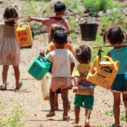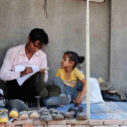
Search
Articles

Child Poverty: How to Measure and For What Policy Purpose?
There is now a consensus that addressing child poverty is important to breaking long-term social and economic drivers of poverty, and to reflecting the human rights agenda. Indeed, the commitment is enshrined in the Sustainable Development Goals (SDGs). This consensus is recent and not universal. Only three years ago I was discussing the issue with governmental officials who said, ‘children can’t be poor because they don’t work’. So, it is important not to be complacent and to work on improving evidential and advocacy-based approaches, as discussed later in this Dimensions issue.

Child and Adolescent Poverty and Social Rights in Mexico: A Multidimensional Poverty Measurement Approach
One of the reasons it is so important to eradicate child and adolescent poverty is because of its consequences for a person’s present and future development. Poverty during childhood is more likely to be permanent, since its effects on health and physical and cognitive development are usually irreversible. The economic and social dependency of girls, boys and adolescents generates complex dynamics of vulnerability that require appropriate public policy strategies.

MPI and MODA: Disentangling the Differences Between a Policy Tool and Advocacy Instrument
Target 1.2 of the Sustainable Development Goals is, by 2030, to reduce at least by half the proportion of men, women and children of all ages living in poverty in all its dimensions according to national definitions. To monitor this goal, countries will have to define and measure multidimensional poverty. There are a few examples of measures of multidimensional poverty, and sometimes it might be difficult for policy makers and civil society alike to distinguish one multidimensional measure from another. One pair of measures whose similarities and differences are not well understood are the Multidimensional Poverty Index (MPI) and the Multidimensional Overlapping Deprivation Analysis (MODA). This article attempts to shed some light on this issue.

Building a Child Poverty Measure to Inform Policy
Children are especially vulnerable to poverty. Child poverty tends to be higher than poverty among adults, and the experience of poverty during childhood can have negative lasting effects on individuals’ lives. The 2030 Agenda, in particular target 1.2 of the Sustainable Development Goals (SDGs), requires information on multidimensional poverty among children. Most commonly, this information will be obtained by disaggregating the national Multidimensional Poverty Index (MPI) by age to illuminate child poverty. It could however also draw on a stand-alone measure of child poverty*.

The Insights From a Comparable Child Poverty Measurement: The Case of South Asia
The global multidimensional poverty index (MPI) has been very useful in shining a light on child poverty. When, in July 2017, the global MPI was age-disaggregated to profile children’s poverty, the Executive Director of UNICEF at that time, Tony Lake, stressed in his High Level Political Forum address the headline that half of the world’s poor people who live in acute multidimensional poverty, according to the global MPI, are children. The global MPI is an index of acute multidimensional poverty that covers three-quarters of the world’s population –mainly those living in developing regions– and over 100 developing countries. It is produced by OPHI at the University of Oxford with UNDP’s Human Development Report Office.












